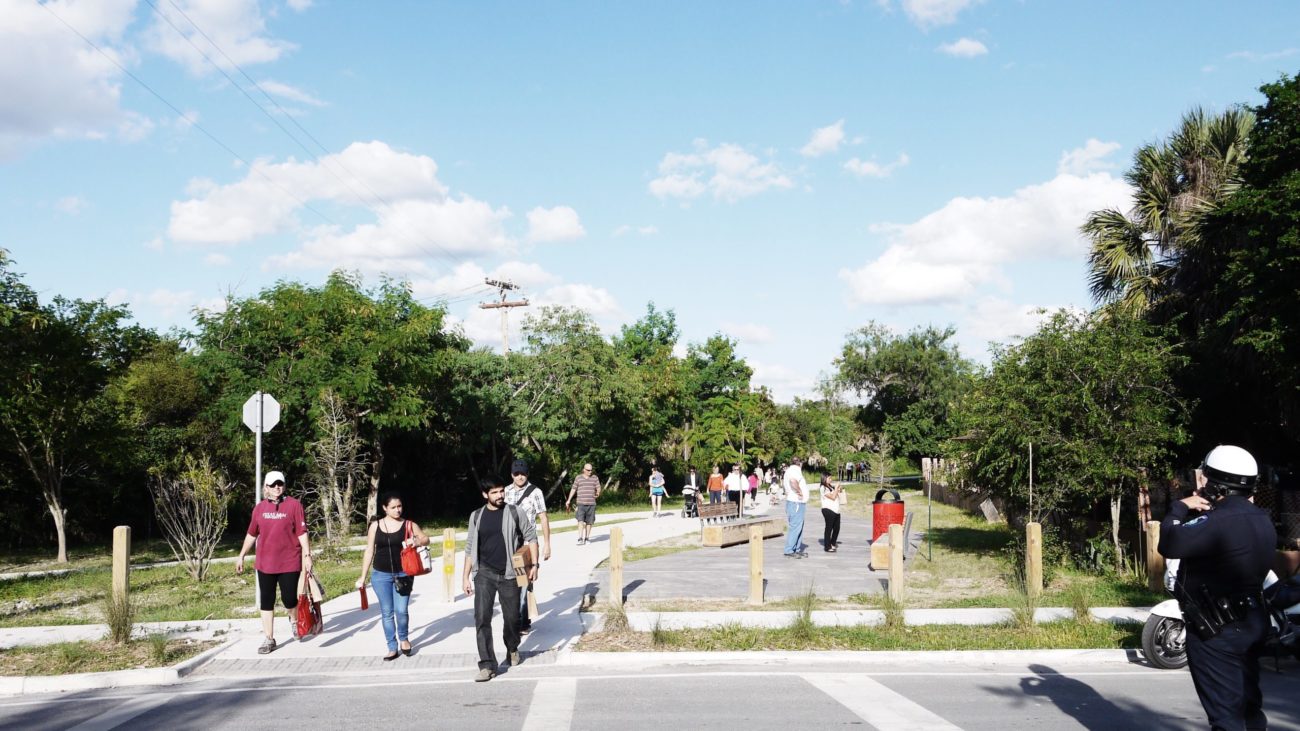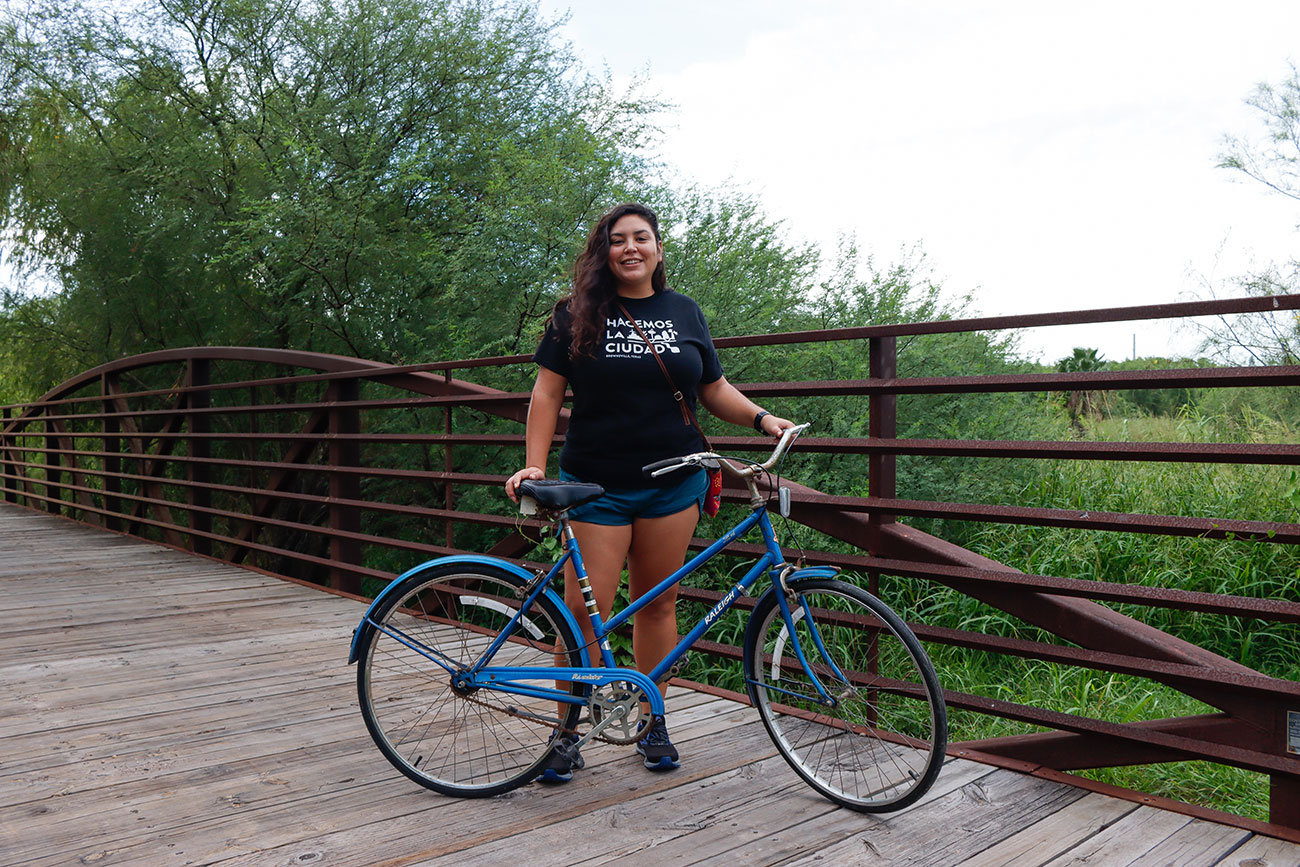We asked Dr. Dolly Sevier to contribute to this report given her perspective as a native of Brownsville and as someone who encounters the health issues of families daily through her work as a pediatrician. —Lizzie MacWillie, Kelsey Menzel, Jesse Miller, and Josué Ramirez, Brownsville Undercurrents editors
Had I been surveyed when I left Brownsville for college almost 20 years ago, I would have identified as a healthy person. That being said, my head was left spinning some months later when a charismatic college professor ended his lecture with a photo of him and his young children after a jog on Town Lake in Austin, Texas. I don’t recall the reason for sharing the photo. I was lost in my thoughts—a family jog was not in my lexicon.
The Brownsville I left for college is not the Brownsville I returned to as a pediatrician. I was glad to learn that while I was taking up an active lifestyle away from Brownsville, policymakers locally were also focusing on health, trails, and promoting active lifestyles. Even in its infancy, the Battlefield Trail was inspiring. In the early days, it was a relatively plain, straight trail that crossed the heart of the city. It may not have been much to look at then, but it was monumental, as it was the first step to get us on the path we are today of expanding trail access to neighborhoods across the city and county. It has now been updated with landscaping, water fountains, shade structures, and fun glow-in-the-dark rocks.

The Belden Trail is a recent addition to Brownsville’s public space options. Credit: buildingcommunityWORKSHOP
If the Battlefield Trail was the seed that started the active plan, CycloBia—a free event that closes city streets to encourage families to walk, run, ride a bike, and just get out and have fun—felt like the pride of the first bud blooming from a small plant. CycloBia, along with protected bike lanes downtown and the beautiful Belden Trail, felt like an active lifestyle renaissance for Brownsville.
Back then, these changes naively inspired me to feel as if everyone was getting healthier and diabetes was dissolving away. Unfortunately, my experience as a pediatrician here has shown me this is not the full picture.
Although all of these improvements were, and continue to be, encouraging, the unfortunate rate of childhood obesity in my exam rooms tells me that we still have work to do to motivate and include the most vulnerable in our community. With so many opportunities for fitness and a budding culture of health, what is truly to blame? In trying to answer this question, I go back to that feeling I had when I saw my professor’s active family photo—and my shock as an 18-year-old that a family might go on a jog together.
I notice when talking about exercise in the exam room that it seems like either a chore or a luxury: a chore for the chubby sibling, and a luxury for people with time and gym memberships. There is not a lot of room—especially in hard-working impoverished families—for exercise to be fun. My head spun seeing those grins on Town Lake because I had no reference for family + exercise = fun. I had been in tennis, I had been a diver—but that was what you did in high school. It didn’t seem to have anything to do with my family.
Although I am thankful that the trails have provided a safe space for exercise and promoting health, there are still barriers to exercise and improving health in Brownsville that we need to consider. These barriers fall into two main categories: patriarchy and employment, with the former having perhaps the most pronounced effect. In Brownsville, we need to look at the forces of patriarchy in the face before lacing up our shoes for a run.

Eva Lizette Garcia, a member of the Rails to Trails Conservancy, works as the project manager for the Caracara Trails in the Rio Grande Valley. The Caracara Trails will help foster tourism, transportation, health, and economic development in the region. Garcia says, “One of the project's goals is to improve the quality of life in my immediate, predominantly Latino and low-income community, which is challenged by high rates of obesity and diabetes.” Credit: Veronica Gaona
Just as we Latinos are known for our strong family ties, we are unfortunately known for our strong patriarchal practices. Locals can tell you (either boasting or embarrassed) that there is a disproportionate focus on women’s beauty and outward appearance. The unexpected excess of high heels and perfect hair and make-up is as evident at school drop-offs as it is at grocery check-out lines. Although we’ve all seen pristine make-up in post-workout selfies, this enthusiasm for beauty generally does not lend itself to a quotidian sweat break. A focus on appearances can also cause barriers in the form of jealous partners not wanting women to leave the house and be seen in exercise clothes by other men, and, frankly, the unfortunate and unwanted catcall while jogging.
Next, a significant proportion of the family units in Brownsville have a father who works out of town and is gone for a few weeks to months at a time. These distant jobs in sectors like truck driving, welding, construction, and natural gas offer better pay than is available locally. Although this scenario can allow a family to inch out of poverty, it leads to an unusual family “routine” where the woman is a single mother for weeks until dad comes home, and then it’s cookouts for days. This seesaw between a single mother having to juggle everything and whole-family get-togethers doesn’t leave room for prioritizing exercise.
Needless to say, true poverty places certain limitations on exercise as well.
Finally, many of the women who find themselves with supportive partners may still feel pulled by other obligations, including the engrained ethic to “work hard.” They may feel guilty carving out time just for the luxury of exercise.
Combine all of these pressures and it’s easy to see that individual prescriptions of exercise, and even individual efforts of exercise, just aren’t enough. Until we allow families, specifically mothers, to have fun exercising, we will never see people coming in droves to jog on our trails. Thinking of it in terms of an allowance—or permission—may seem harsh, but it’s precisely what needs to happen. Just like my college professor was setting an example for his children, our mothers can set an example for our children. Our teenagers need to know what a family jog looks like. They need to have it in their lexicon. If they are allowed the space to enjoy it, our mothers can show our children that getting outside and being active is more important than perfect appearances.
For every mile of trail we add, we should focus our efforts on shifting the collective consciousness about the place of women in our society and the place of exercise in our families. This will improve health like nothing else. Healthier eating, lower stress, and reduced health problems will follow.
Biographies
is a native of Brownsville. She went on to graduate with honors from the University of Texas at Austin with a bachelor’s of science in psychology and minor in biology, then attended the University of Texas Southwestern Medical School in Dallas, and remained in Dallas to complete her residency in pediatrics at Children’s Health. She has since returned to Brownsville to practice. Sevier is an active member of the Texas Pediatric Society, the Texas chapter of the American Academy of Pediatrics. In 2018 she earned a grant from the Texas Pediatric Society Foundation to turn a caboose into a library in a local park in Brownsville. She also works to help shine a light on the plight of asylum seekers in the United States.
The views expressed here are those of the authors only and do not reflect the position of The Architectural League of New York.
